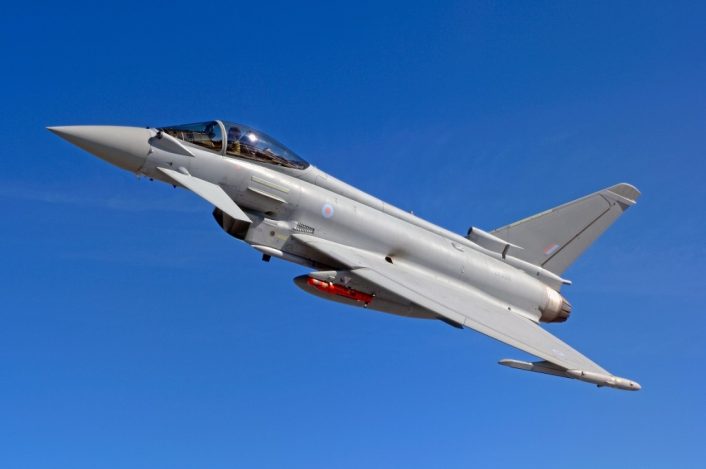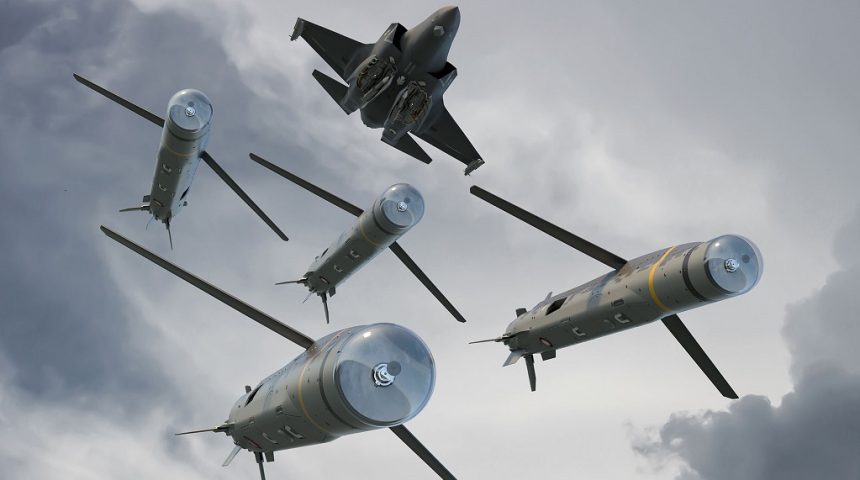The new SPEAR 3 next-generation network enabled missile will allow the Lightning Force to perform cost efficient stand-off, high precision attacks with low chance of collateral damage.
The United Kingdom Ministry of Defence awarded MBDA a contract to provide the SPEAR 3 (Selective Precision Effects at Range Capability 3) air-to-surface missile for the F-35B Lightning II. The contract, worth £550 million, will secure seven years of demonstrations and manufacturing supported by more than 700 jobs, including the creation of 190 highly skilled technology jobs in system design, guidance control and navigation and software engineering.
Defence Minister Jeremy Quin said: “The development of this next-generation missile will allow us to protect our personnel and assets on the ground, from thousands of metres in the sky above. Our commitment to this system will secure hundreds of highly skilled jobs across the UK and showcase British technology and weapon expertise on the world stage.”
The award of this contract follows a successful first four-year development phase, started with a first contract in 2016 and closely followed by the Defence Equipment & Support (DE&S) Lightweight and Medium Attack Systems (LMAS) team. During the assessment phase which preceded the first contract, MDBA already performed some flight testing of the SPEAR aboard the Eurofighter Typhoon, which included the first air launch demonstration in March 2016, during which the missile transitioned through separation from the Typhoon to powered flight before completing a series of maneuvers and accurately following the planned trajectory that led to a terminal dive to the desired point of impact.
Colonel Martin French, the project’s team leader, said: “The placement of this contract marks the next major stage of the SPEAR3 weapon system’s development and is a result of months of detailed negotiations between MBDA and the LMAS project team. Building on the successes and technology achievements of the previous four years’ work with MBDA, we now enter the exciting and challenging demonstration phase where we start to prove the system against the UK’s requirements and ramp up activities to integrate this highly-capable weapon system onto the F-35B aircraft.”
The initial demonstration phase funded by this contract will assess the SPEAR 3 against the UK military’s requirement through testing, simulations and trials, which will include controlled firings from a Typhoon, before moving on to testing of the weapon system on the F-35B. The fact that the Typhoon is mentioned as a first test platform for the SPEAR before moving to the F-35B, could leave the door open also to a possible future integration on the European aircraft. According to MoD officials mentioned by Defense News, Italy and Germany showed interest in the SPEAR 3 also for their air forces.
The SPEAR 3 should achieve the Initial Operational Capability (IOC) as the primary air-to-ground weapon of the Royal Air Force and Navy F-35B over the next seven years. The weapon has been defined as a network-enabled miniature cruise missile, with a range in excess of 140 km (87 miles or 75 NM), which integrates technology from the Brimstone 2 missile, also known as SPEAR 2. For the sake of completeness, SPEAR 1 is the Paveway IV dual mode GPS/INS and laser-guided bomb, already integrated on the F-35B, unlike the Brimstone. One of the main differences of the SPEAR 3 from the Brimstone is the presence of folding wings.
According to a Royal Navy press release, the missile weights under 90 kg (200 lb) and is 1.8 meters long, capable of flying at high subsonic speeds powered by a turbojet engine (reportedly the Pratt & Whitney TJ-150-3). The SPEAR 3, according to MBDA, allows an attack with high precision and low chance of collateral damage at stand-off ranges with a cost-efficient missile, against a very broad range of surface targets, guided by a multi-mode seeker (reportedly millimeter-wave and semi-active laser seekers derived from the Brimstone 2) and ING/GPS. The F-35B can carry eight of these munitions internally, using racks similar to the ones of the GBU-39 and GBU-53 Small Diameter Bombs.

Regarding the network enabled capability, the SPEAR 3 has a two-way datalink that allows mid-course updates, retargeting and abort functions. MBDA also reports that the weapon can be employed in a fire-and-forget mode, semi-active laser designation mode (requiring continuous target lasing with a targeting pod or the F-35’s Electro-Optical Targeting System) and in a fully network enabled mode.
Another variant of the SPEAR 3 currently in development is devoted to the Electronic Warfare (EW) and Suppression of Enemy Air Defenses (SEAD)/Destruction of Enemy Air Defenses (DEAD) missions. This variant, called SPEAR-EW, was first announced in 2019 and is being developed by MBDA in partnership with Leonardo, as it will integrate the latter’s Digital Radio Frequency Memory (DRFM) miniaturized EW payload.
DRFM in considered one of the most advanced electronic jamming and detection technologies available today, which can provide false target decoying and obscuration jamming capabilities to both increase the survivability of the launcher aircraft and provide a SEAD capability. The network enabled SPEAR 3 could use also DRFM payload in swarms to saturate advanced Anti-Access/Area Denial (A2AD) air defenses, as highlighted by Mike Mew, MBDA UK Director of Sales and Business Development, in a 2019 press release:
“SPEAR-EW is a revolutionary new capability that, alongside the existing SPEAR3 weapon, marks a fundamental change in the ability of friendly air forces to conduct their missions despite the presence of enemy air defences. Our vision for SPEAR is to create a swarm of networked weapons able to saturate and neutralise the most sophisticated air defences. Adding SPEAR-EW to the family alongside our existing SPEAR strike missile demonstrates the principle of introducing complementary variants to the SPEAR family that will add significant capability and force multiplication without the need to repeat the platform integration. We have an exciting roadmap of variants, spirals and technology insertions in the pipeline to further enhance the family as we move forward.”
Some more details about the SPEAR-EW, which is currently being further developed as part of a Technical Demonstration Programme contract awarded by the DE&S, were revealed by the MBDA’s Head of Air Domain Sales for the UK, Chris Stevens, in the November 2019 issue of Eurofighter World. The DRFM payload is based on Leonardo’s BriteCloud Expendable Active Decoy (which is currently being integrated on the RAF Typhoon fleet) and, since it uses less space than the conventional SPEAR’s warhead, it leaves space for additional fuel which allows triple the original range. The SPEAR-EW’s power, weight, and center of gravity are not changed, so the integration aboard any aircraft that is already certified for the SPEAR 3 is straightforward.
According to Stevens, the SPEAR-EW could either be launched at long range or to loiter over an area for a long time, performing its job as a stand-in jammer or a decoy to either let through the contested airspace the launcher aircraft or allow friendly aircraft to locate the enemy air defenses and perform SEAD/DEAD. It is not known yet if the SPEAR-EW will have any kinetic destruction capabilities, even without using an explosive warhead, and if the MoD is intentioned to proceed with the integration of this variant on the F-35 and the Typhoon. It is worth noting that the SPEAR-EW has also been featured among the weapons of the proposed Typhoon ECR variant.
Here below you can find also a short video which illustrates a concept-of-use of the SPEAR 3 from the F-35B. During the second weapon launch sequence, the F-35 is also showed carrying the Meteor BVR (Beyond Visual Range) air-to-air missile in its weapon bays.









